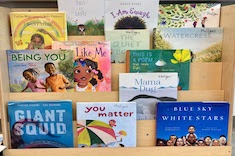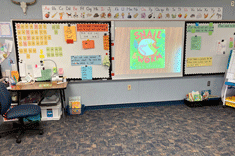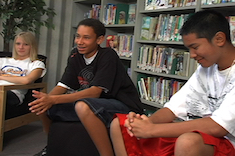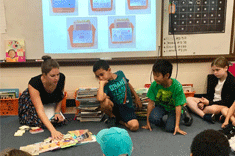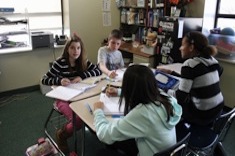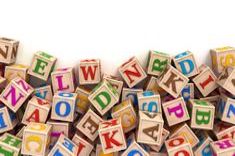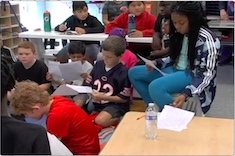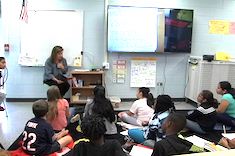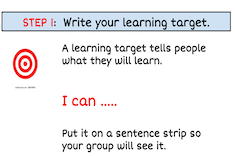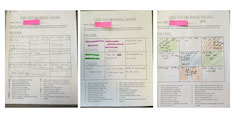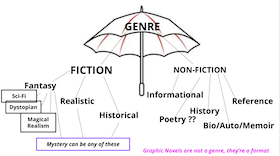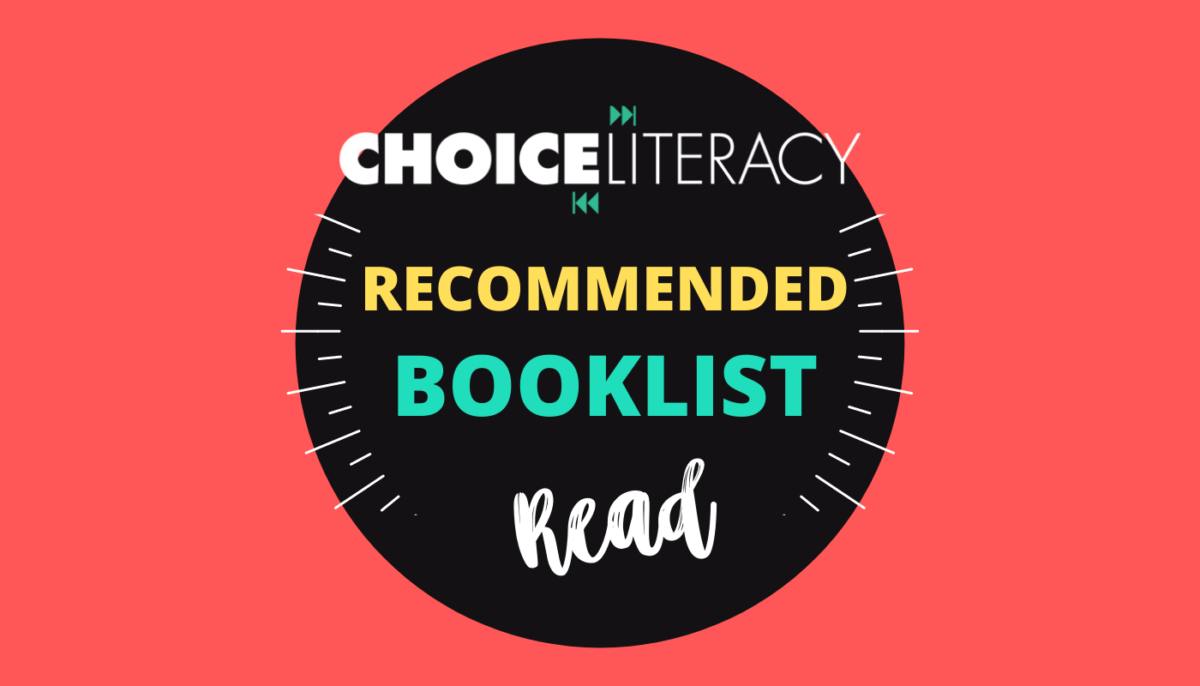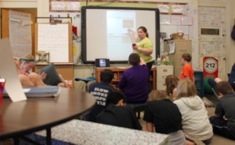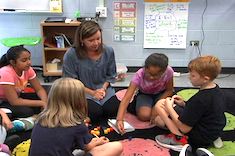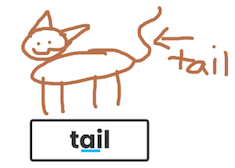Articles
Here is where you’ll find all the latest print features from our contributors. If you’d like to browse specifically by grade level, topic, or contributor, you can use the links in the right sidebar.
Latest Content
Bedtime Stories with a Mystery Reader
Tara Barnett and Kate Mills share a wonderful school-wide and home read aloud experience: Bedtime Mystery Reader. They outline all of the details to bring Bedtime Mystery Reader to your school.
Understanding Literary Language
Tammy Mulligan leads us through a mini-unit of study designed to help young readers notice, explore, and understand literary language.
The Big Screen: Reimagining Read Aloud
Ruth Metcalfe leverages pandemic adjustments into making the read aloud experience bigger and better for her students. The simple act of projecting the read aloud book leads to significant adjustments to meet the needs of young readers.
Learning Joy
Bitsy Parks shares the story of a striving student, and pinpoints the elements of a rich workshop classroom that supports finding joy in becoming literate.
Planning for Virtual Literacy Intervention
Stephanie Affinito curated a wise and useful guide to plan virtual literacy intervention. Useful resources are included for those who are teaching remotely or in person.
It’s About Survival
Melissa Styger shares an end-of-year letter writing celebration that allows students to reflect on the year and provides an invitation to next year’s students to be excited about the future.
Take a Chance
Julie Cox invites us to take risks in order to encourage students to try new things with their writing and reading. Julie concludes that when teachers are professional risk-takers, we are more available to students and know how to help them when they fail.
Student-Planned End-of-Year Celebration
Josie Stewart and Hannah Tills know the end of the school year is full, yet they take the time to reflect and celebrate what learners have built throughout the year by asking students to create a plan for a final celebration.
A Collection of Treasured Life Lessons
Melissa Quimby leads her students in rich thinking about life lessons and encourages them to treasure the wisdom from books.
Creating Progressions to Meet Learners Where They Are
Tara Barnett and Kate Mills share how to create and use learning progressions to support students in deepening their understanding of theme. Download a copy of a theme progression.
Be the Teacher
Tammy Mulligan turns to her students for advice on how to make phonics lessons “sticky.” The Be the Teacher Center was created and has become a staple in her primary classroom.
The Choice Literacy Book Club Discusses Apple and Magnolia
The Choice Literacy Book Club discusses Apple and Magnolia.
Deepening Discussion with a Circle Process
Jen Vincent strengthens the authenticity of a share session in writing workshop by building and tending to relationships that honor a circle process that originated in Indigenous communities.
Determining Importance in Fiction
Dana Murphy guides us in listening and responding to students during strategy-building lessons to grow readers. In this example, she shows the complexity and nuances of direct instruction to build comprehension strategies.
Student-Led Reading Seminars
Tammy Mulligan organizes her second graders to teach reading seminars to their peers. She outlines the steps to make this engaging practice a reality in any classroom.
Create-Your-Own Reading Challenge
Leigh Anne Eck encourages students to create their own reading challenges to stretch their reading identities. Download the challenge to share with your students.
Invitations to Reading a Variety of Genres
Katherine Sokolowski shares the genre invitations she issues to students to help them grow as readers.
Picture of the Week
Bitsy Parks shares a Picture of the Week routine that builds real-life literacy skills, and documents and celebrates important moments throughout the school year.
Poetry Part 1 Podcast
Cathy Mere and Ruth Ayres discuss poetry on the podcast.
Novels in Verse (Booklist)
Leigh Anne Eck curates a fantastic booklist of novels in verse for middle-grade and young adult readers.
Age Poems
Katherine Sokolowski immerses students in poetry with mentor texts about age and time to linger in thinking about their own ages. This combination invites poetry into classrooms and gives students space to embrace the genre by writing their own age poems.
Rehearsal for Writers Podcast
Cathy Mere and Ruth Ayres discuss student-led learning on the podcast.
Making Data Personal Podcast
Cathy Mere and Ruth Ayres discuss student-led learning on the podcast.
Student-Led Learning Podcast
Cathy Mere and Ruth Ayres discuss student-led learning on the podcast.
Mining the Data
Heather Fisher shares how to rebrand data meetings as mining meetings to turn anxiety and frustration into actionable and meaningful responses to data.
Making Data Review More Personal
Dana Murphy describes an approach to “data-review days” that looks beyond numbers to the faces of kids and talks about all kids in all of their humanity.
Student-Created Assessments
Ruth Metcalfe releases responsibility to her first-grade class to create formative assessments and take ownership in their learning.
A Perfect Opportunity for Choice: Showing Theme
Tara Barnett outlines ways to offer choices for students to show their understandings of a book’s theme. Download a choice board and rubric.
The Choice Literacy Book Club Discusses Unbound: The Life + Art of Judith Scott
The Choice Literacy Book Club discusses Unbound: The Life + Art of Judith Scott by Joyce Scott with Brie Spangler and Melissa Sweet.
Browse Content By
Type
Category
- Assessment Tools
- Big Fresh Archives
- Booklists
- Choice Numeracy
- Classroom Design
- Common Core
- Community Building
- Conferring
- Content Literacy
- Digital Literacy
- English Language Learners
- Equity
- Family Relations
- Free Samples
- Guiding Groups
- Leadership
- Literacy Coaches
- Mentor Texts
- Minilessons
- New Teacher Mentors
- Podcasts
- Poetry
- Quote Collections
- Reading Strategies
- Self Care
- Struggling and Striving Learners
- Talking and Listening
- Teacher Study Groups
- Teaching Reading
- Teaching Writing
- Word Study and Vocabulary
Author
- Melissa Quimby
- Nawal Qarooni
- Gwen Blumberg
- Julie Cox
- The Lead Learners
- Hannah Tills
- Josie Stewart
- Ruth Metcalfe
- Mallory Messenger
- Becca Burk
- Jodie Bailey
- Vivian Chen
- Mary Brower
- Tiffany Abbott Fuller
- Stephanie Affinito
- Ruth Ayres
- Leigh Anne Eck
- Heather Fisher
- Shari Frost
- Julie Johnson
- Suzy Kaback
- Gigi McAllister
- Shirl McPhillips
- Melanie Meehan
- Cathy Mere
- Debbie Miller
- Tara Barnett and Kate Mills
- Tammy Mulligan
- Dana Murphy
- Bitsy Parks
- David Pittman
- Brenda Power
- Heather Rader
- Matt Renwick
- Mandy Robek
- Christy Rush-Levine
- Gretchen Schroeder
- Jen Schwanke
- Brian Sepe
- Katherine Sokolowski
- Stella Villalba
- Jennifer Vincent
Grade Level
Choice Literacy Membership
Articles
Get full access to all Choice Literacy article content
Videos
Get full access to all Choice Literacy video content
Courses
Access Choice Literacy course curriculum and training


